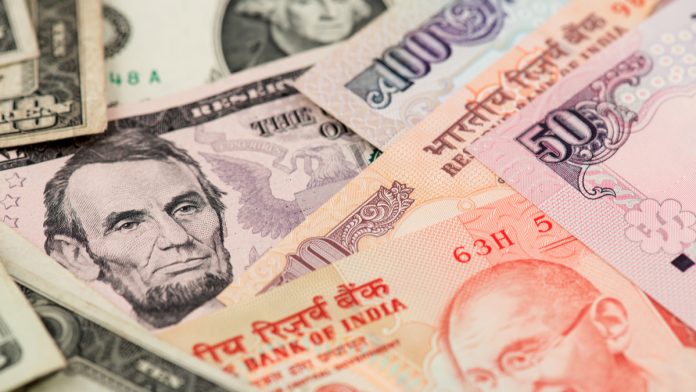- Indian coronavirus cases surge by over a million in just 20 days
- Localised lockdowns increase hindering economic recovery
- Safe haven US Dollar (USD) advances as Trump bans TikTok & WeChat and US – Sino tensions rise
- US non-farm payroll expected to show 1.5 million jobs created in July vs 4.6 million in June
The US Dollar Indian Rupee (USD/INR) exchange rate is edging higher for a second straight day on Friday. The pair settled on Thursday +0.14% at 74.90. At 10:15 UTC, USD/INR trades +0.04% higher at 74.95. The pair is set to end the week approximately at the same level that it started the week and remains within the familiar range 74.50 – 75.50.
The Indian currency is trading in the red after the Reserve Bank of India decided to keep rates on hold on Thursday and as coronavirus cases soar through the grim 2 million milestone.
The RBI voted to keep interest rates unchanged in a bid to tame inflation. The central bank also reiterated its accommodative stance, which it will maintain as long as necessary to revive economic growth.
India has become the third country to pass the grizzly 2 million case milestone. The last million cases have arisen in the past 20 days, a much faster rate than the US and Brazil. Whilst the country as a whole continues to ease lockdown measures, spurred by the low death rate, localised lockdowns in some cities or districts are become more common. This is likely to hamper the economic recovery.
The US Dollar is advancing against its major peers as investors seek its safe haven properties. Trump signing an executive order to ban popular Chinese apps TikTok and We Chat in 45 days time has stoked already fragile tensions between US and China, unnerving investors.
Investors’ attention is turning towards the US labour Department’s jobs report. Analysts are expecting 1.5 million new jobs to have been created in July. This is down from 4.6 million created last month. Lead indicators across this week, such as the ADP private payroll report and the employment component of the ISM non-manufacturing report disappointed, indicating that today’s non-farm payroll figure could be disappointing.





